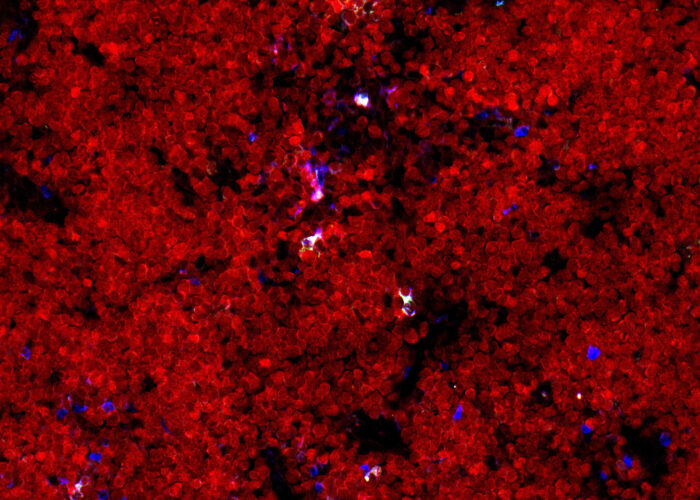Discovery of a new checkpoint that controls the development of innate immune cells with a key role in parasite defence and allergy

The innate immune system is the first line of defence against infection by bacteria, viruses, and parasites. Innate lymphoid cells (ILCs) are one group of cell-types that make up this system. Type 2 ILCs (ILC2s) in particular play an important role in dealing with parasites and are implicated in allergy. As a relatively newly discovered cell-type, their development is poorly understood, but its study could help us understand how they function in response to parasites and how their function can be derailed in allergic disease. Andrew McKenzie’s group, in the LMB’s PNAC Division, has identified a transcription factor that acts as one of the checkpoints controlling divergence between T cell and ILC2 development.
What are ILC2s?
Innate lymphoid cells are thought of as the innate counterparts of T cells. Their vital role in the innate immune response is to secrete effector cytokines that regulate the function of innate and adaptive immune cells. ILC2s localise predominantly at mucosal surfaces where they act as critical sentinels for tissue damage and infection, with a particular role in defence against infection of parasitic worms known as helminths.
The thymus is known to provide a specialised environment to promote T cell differentiation, and ILC2-like cells had also previously been observed in adult and embryonic thymus. Ana Ferreira, a postdoc in Andrew’s group, wanted to investigate whether ILC2 cells develop from the same early thymic progenitor (ETP) cells that differentiate into T cells. Using a 5-colour reporter mouse strain, she was able to show that ILC2s could be found in the embryonic thymus even before T cells. Using embryonic thymus in vitro organ culture then allowed the team to determine that T cells and ILC2s do indeed share the ETP precursor.
Using a variety of techniques including RNA sequencing and chromatin immunoprecipitation followed by sequencing (ChIP-seq), Ana and her colleagues identified the transcription factor RORα as a critical checkpoint that controls divergence between the two cell-types. This led to their proposal of a new transcription factor network to explain how RORα regulates expression of other transcription factors to drive ILC2 differentiation and repression of T cell fate.
Large parasites, such as parasitic worms, affect 1.5 billion people and about 300 million people live with asthma, so a full understanding of ILC2 cell function and dysfunction could be of great benefit for identification of therapeutic targets and development of drugs that help support our immune system’s defence against pathogens or reduce inappropriate allergic responses.
The work was funded by UKRI MRC, Wellcome Trust, and a Croucher Cambridge International Scholarship.
Further references
RORα is a critical checkpoint for T cell and ILC2 commitment in the embryonic thymus. Ferreira, ACF., Szeto, ACH., Heycock, MWD., Clark, P., Walker, JA., Crisp, A., Barlow, JL., Kitching, S., Lim, A., Gogoi, M., Berks, R., Daly, M., Jolin, HE., McKenzie, ANJ. Nature Immunology https://doi.org/10.1038/s41590-020-00833-w
Andrew’s group page